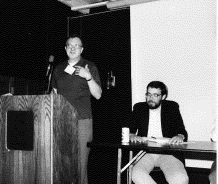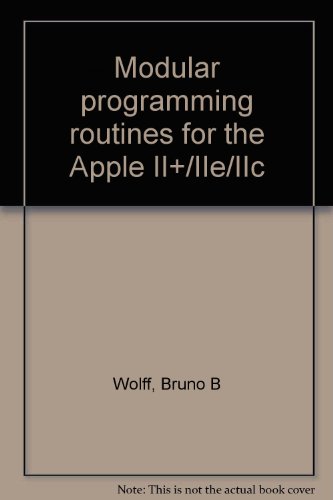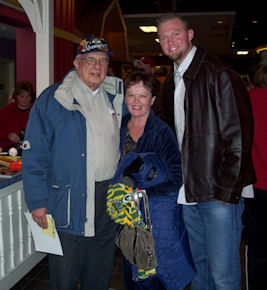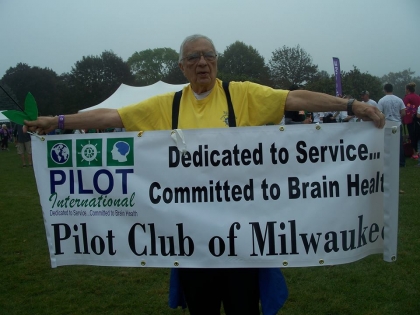In the April 1984 issue of Softalk, Bruno Wolff wrote the fascinating Storytalk Fiction "Sherlock Holmes and the Analytical Engine." You'll find a full reprint of Bruno's short story here for your reading pleasure. And here is how our community member Timlynn found him and reached out to learn more about this former Softalk freelance writer. Now, here in Bruno's own words is what he has been up to since those early days of the microcomputer revolution...
The start is really a few years before 1984 when I wrote my article about Sherlock Holmes for Softalk. During the time I was working as an editor at Bruce Publishing I wrote a short story in the mid-sixties about an alcoholic chess player who defeats a computer. Computers were a sort of curious mystical engine in those days. In 1967 I came to the University of Wisconsin-Milwaukee (UWM) as Director of Publications and then soon became Director of University Services which comprised several units that charged-back (billed) other university departments for their work. I had at one time in my budget all the costs of mail and telephones for the whole campus, but I convinced the powers that be that we should allocate this money to the schools and colleges and other campus units because decisions on financial priorities should be theirs and not ours since we had such a finite pot from which to pour.
We had a bookkeeper who did all this work manually and I saw advantages to involving computers to simplify this tedious work and even make it more accurate. The computer center had its own chargeback program and I was permitted to borrow its code to shape to our own use. We had three computers available to us, a big IBM 370 in Madison for our budgeting and accounting, an IBM 350 for local administrative use, and a Univac 1106 for the academic side of the house. The academic computer center had a worthy set of in-service classes each semester. I took two I remember--one on Fortran (formula translator) and the other on COBOL (common business oriented language). I used these and some report generators to produce the reports I needed. At one point I got the telephone company to provide us a tape each month of their billing and a long tradition was started.
My boss promoted me to his business manager where I oversaw all the administrative functions of the second largest division on campus. Once more my need to simplify huge volumes of data needed the help of the computer. We got tapes each month from Madison, where the University of Wisconsin ran all the budget and accounting data for some 13 campuses of the University of Wisconsin System. I read, sorted and analyzed lots of data. I used all the various computers on hand doing some tasks on the Univac (upgraded to an 1108) and some on the IBM 360. In the mid-seventies we combined two units that nearly doubled the size of the units I oversaw. My boss, thinking I didn’t have enough to do to keep me out of trouble, asked me to build a personnel system. In it I developed the first screen input system for an administrative unit on our campus. We input data to update personnel matters on the Univac and then transferred those data to the IBM to crank them through a report generator. Monthly reports were sent to each campus unit from this system. This system lasted even after I left the university for my three years at the Milwaukee Public Museum. Its life span was about 15 years and was replaced by a multimillion dollar system that some feel was not as respondent to the needs of end users as was ours.
Meanwhile being busy assisting my wife in raising six kids and doing school and baseball related parenting tasks my writing time diminished. I did find time to write a few things including three short stories with a Sherlock Holmes theme. I sent these to a published, but unfortunately for me or for them, I was rejected after a long time of consideration.
One of the more interesting projects I started in all this spare time at the university was to work with the Economics department on writing a management game for the students in the economics classes at Shorewood High School. The kids loved it and I was supported in computer time by Dr. Leon Shur, its chair and later acting Chancellor of UWM and a bridge playing associate of mine in his last years. This was just before the advent of the microcomputer.
I knew one of these was for me. I looked at three competitors—the Commodore Pet, the TRS-80, and the Apple II. Somehow I got it right and bought the Apple II. We had one involving a spinner when I was a kid and I invented two other very rudimentary games. But when the chance came I started to work on a baseball game with the Apple, somehow jamming all that code into 16K. There was no convenient way to load data into it and no printers to connect to it in the very early days. We were limited to having only six teams and those resident in the memory. I became fairly adept in making the machine sing (literally playing “Take Me Out to the Ballgame” in the bottom of the seventh). I could even read some of the 6502 assembler. I became enough of an expert that I decided to write for that wonderful but short-lived magazine, Softalk.

I presented the baseball game at several meetings of the Society for American Baseball Research (SABR). For a while I was their simulation darling. They even hired me to run a game for them. A panel of knowledgeable members picked two teams, the Ancients and the Moderns, one group before 1960 and the rest after. They were trying to get a producer to run the result for a TV show using old film clips. Well the Moderns beat the Ancients 3-1 but SABR lost on the idea. To do this simulation, I rewrote part of my program to change from a play by play to a pitch by pitch format, greatly enhancing the realism of the game. After each of our seasons I check on how close our league came to a standard, the average percentages for 30 years of activity by the National League. These are they for 2013
| Stats | BA | HR | 3b | 2b | w | k | sb |
|---|---|---|---|---|---|---|---|
| Computer League | 0.25395 | 0.02275 | 0.008 | 0.0434734 | 0.06967 | 0.183 | 0.687 |
| NL 1968-1998 | 0.25616 | 0.02246 | 0.0068 | 0.0437491 | 0.09544 | 0.169 | 0.678 |
You can see we came very close. I adjusted the formula to give more walks in 2014.
At a SABR meeting I was asked to be on a panel on computers and baseball, another member of which was the venerable Bill James the guru of baseball statistical analysis, who once advised the Red Sox on playing strategy.
To illustrate how things have changed in 30 years, in the early days I had to go to the Milwaukee Public Library downtown into a reserve section and copy teams' stats from the Official Baseball Guide into my notebooks. Now I go to MLB.com and download them into Excel.

My first article for Softalk was on reading data from a magnetic tape, like the old tape recorders, into the machine. I did another article called “Successful Simulations” about how to write simulations code. There were no word processors in those days and I wrote a third article called “A Pseudo Word Processor.” Finally my masterpiece for Softalk was “Sherlock Holmes and the Analytical Engine.” The engine was built by a man in England named Charles Babbage with the help of Ada, Countess Lovelace nee Gordon, the daughter of George Gordon, better known today as Lord Byron, one of the best of the Romantic poets of the early 19th Century. Her work so inspired later-day software makers that a language was named in her honor, Ada.
As a result of my articles in Softalk, I was solicited by a publisher to do a book on computing. My Modular Programming for the Apple II+/IIe/IIc came out in 1986 and was eventually translated into a Spanish edition. I still use several of the routines presented therein.
As Softalk did, I too lapsed at the University with the opportunity to take a senior position at the age of 49 at the Milwaukee Public Museum (MPM), one of the four or five top natural and human history museums in the world. Its method of displaying artifacts in a natural setting is known around the museum world as the Milwaukee way. I started bringing computers there mainly for budgeting and accounting information as well as word-processing. It was a great job but we at the top of the place were not understood by the county politicians who did not view the museum as an educational and scientific enterprise but an entertainment venue. In their defense the county was the last place with which to associate a museum, museums belonging more properly to the university or school systems. After a little over three years, I went back to the UWM as an assistant dean.
My stay at the Museum did have a residual effect: it inspired me to write a novel greatly embellishing my times there. It was never published. It was the story of Egyptian radicals who desired the return of their sacred artifacts, one of which had been sent for safe keeping to the MPM from the British Museum. The embellishment was of this type. In real life one night I got called to the museum because someone had thrown a rock through the glass front door. I got there before the police but after one of our wonderful carpenters had already boarded up the door with plywood. I had pocketed my revolver just in case. When the police arrived, the officer and I cleared the exhibit floors, the only open areas. He stood at the end of one of the exhibit halls while I walked through it from the other end, peering in nooks and crannies to make sure no one was hiding there. We did this for all six halls. In the novel the hero comes in on a similar call that an intruder is in the storage area. The hero confronts the intruder and the bad guy escapes whence he entered through an air tunnel for changing the air in the building powered by a large fan. The bad guy gets out past the fan but our hero turns it on intake, and nasty things happen to the bad guy. Many years after on a visit to my old friends there, an engineer told me there wasn’t enough suction in the fan to do what I had written.

When I returned to UWM many changes had happened respecting computers. The PC and Windows had taken over. Some of my old baseball pals wanted me to rewrite the program for the PC or IBM as we called it. The original program had been written in Integer Basic, and later it was revised to Applesoft, a more flexible floating point arithmetic language. We had started an Apple Baseball League before I left UWM with teams in Toronto, Honolulu, and Louisiana as well as a lot of local lads and even a lady. My eldest son gave me a copy of Microsoft Basic and I soon had the game rewritten and was running a second league. Finally in 2000 the leagues were combined. We are entering our 27th year of play. Over the years among our “owners” have been doctors, lawyers, a university president, a CFO, a corporate financial-systems marketing exec, as well as many others. As a witness to the fairness of the simulation, I have in some 36 leagues won the championship only three times.
With my retirement in 1994, I began to take some serious interest in volunteering hence my long association with Milwaukee Catholic Home (MCH) where I run a weekly bridge game, play Santa, move folks around so they can visit museums and horticultural sites, and present lectures.
I have also become deeply involved in a service club called Pilot International. The motif is the river boat Pilot who steers a true course ever. This club was founded by women business executives in Macon GA in 1921. It is now an international association of clubs in Japan, the Bahamas, Canada, Singapore and Romania as well as the U. S. A. I became the first male member of the Pilot Club of Milwaukee and will be its first male president in July. Our principal effort is to help people with brain-related disorders by raising money for gifts, scholarships, and grants, and also by doing direct services for our clientele like serving food, helping at Special Olympics, and running bingo for the mentally challenged.
I also teach bridge and run a weekly duplicate game at a senior center.
I have lectured on a variety of subjects at the MCH, the senior center, and various schools including my alma mater high school, St. Ignatius, in Chicago as well as schools in New Jersey, Aurora, Illinois, New Berlin WI, and our local grade school. Here is a catalog of what I have taught.
- The Lattimer Massacre (labor history)
- Edgar Allan Poe
- English Poetry from The Beowulf to T. S. Eliot
- Charles Dickens
- A History of the English Language
- The Greek Influence on Western Civilization
- The Roman Influence on Western Civilization
- The Theban Cycle (three plays by Sophocles and one by Aeschylus on the sad story of Oedipus and his family)
- The One Hundred Years War
- Henry IV, Part I
I am going to work on a lecture on William Blake for presentation this summer. I will be starting an eight-week series of bridge lessons at the Milwaukee Women’s Club starting in April. By keeping physically and intellectually active, I stay much younger than I am chronologically thirty years after writing for Softalk.
Every day is a blessing.
Bruno B. Wolff, Jr.
Shorewood, Wisconsin

Recent comments